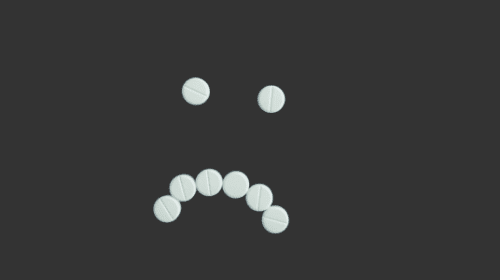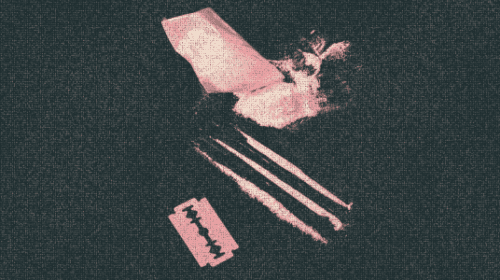Have you ever encountered a sudden burst of positivity and hopefulness during addiction recovery? You may have just experienced a pink cloud. In addiction recovery, the concept of a pink cloud refers to an optimistic period of sobriety when everything in one’s life seems to be going well.
While the pink cloud can be a positive experience, it’s important to approach it with awareness that emotional states in recovery can be complex and varied, and that maintaining realistic expectations and support systems is crucial. There will always be ups and downs in recovery, so it’s important to take advantage of the pink cloud while it lasts.’
Pink Cloud Signs and Symptoms
A pink cloud, also known as Pink Cloud Syndrome, is a term used to describe the emotional state of high optimism, elation, and energy experienced by individuals during or shortly after completing rehab. The feeling usually stems from the realization that they have come a long way and have left the dark phase of addiction behind.
Common signs and symptoms of the euphoria associated with the Pink Cloud Syndrome[1] include:
- Feeling a sense of cheerfulness and joy
- Extreme happiness and well-being
- A sense of contentment
- Focusing on the positive aspects of life and adopting an all-or-nothing approach to recovery
- Having high levels of energy
- Lack of awareness about potential triggers or relapse possibilities
- Thinking that sobriety is easy and no need to practice continued recovery techniques
While the pink cloud can be a positive and encouraging experience, it’s important to remember that recovery is an ongoing process. It’s important to remain mindful of potential triggers and practice continued self-care in order to maintain long-term sobriety.
When Does the Pink Cloud Begin & End?
The pink cloud phenomenon can begin at different times for different individuals and is not limited to the first few months of recovery. It can occur at various stages as individuals progress through their recovery journey. This period is usually marked by a newfound optimism, hope, and motivation to stay sober.
People on the pink cloud often feel more energetic, productive, and engaged. They may be excited to get up in the morning and tackle the day ahead. This pink cloud can be a powerful motivator for individuals in early recovery, helping them stay sober and committed to their goals.
However, while the pink cloud can be amazing, it isn’t a permanent state – much like the euphoria experienced by some substances. For some individuals, the pink cloud may begin to fade after a period, which can vary in duration. As they become more accustomed to their newfound sobriety, they may become more aware of the challenges that come with recovery.
This can include family and relationship issues, financial stress, and deeper emotional and mental health concerns. As reality sets in, individuals on the pink cloud may feel overwhelmed, anxious, or depressed.
This is a critical time in recovery to maintain ongoing practical coping skill development and 12-step program attendance. There is a significant amount of evidence that 12-step fellowships help establish early patterns and help participants remain consistent in their recovery.[2]
It’s important to note that not everyone will experience the pink cloud phenomenon, and that’s okay. Individuals in recovery face a variety of challenges, and everyone’s recovery journey is different. Some may never experience the pink cloud but still find joy and purpose in their sobriety.
Pros and Cons of Pink Cloud Syndrome
One of the most significant benefits of pink cloud syndrome is that it can help individuals feel incredibly motivated and positive about their recovery. This burst of confidence can help individuals finally break free from their addiction once and for all – especially after long periods of struggle.
Additionally, the mindset that comes with the pink cloud can inspire individuals to share their recovery stories with others, which can help those who are struggling to feel more hopeful and determined about their own recovery journeys.
On the other hand, there are also some cons to pink cloud syndrome. A common issue is that it can lead individuals to become overconfident in their recovery, leading them to ignore or neglect some of the behaviors, routines, therapies, or other treatments that have helped them in the past.
This false sense of security can be dangerous because addiction can always rear its head again, even when in recovery. The pink cloud activates an impaired self-awareness[3] that can be dangerous to your recovery progress.
Additionally, individuals who experience the pink cloud can become over-enthusiastic, wanting to tackle everything (family, career, fitness, and social life) at once. But this can lead to burnout, frustration, and, ultimately, relapse.
Another potential challenge of pink cloud syndrome is that the heightened sense of optimism and well-being might diminish gradually or suddenly, which can be disconcerting for individuals and potentially lead to disappointment or feeling overwhelmed. The crash can lead to feelings of discouragement, anxiety, and even depression if individuals have overly identified with the pink cloud as a motivator for their recovery success.
In some cases, the dissipation of the pink cloud might lead to disappointment or stress, which could potentially increase the risk of relapse if individuals are not equipped with effective coping strategies.
Understanding the pros and cons of pink cloud syndrome[3] can enable individuals and family members to strategize for the best possible outcome. One way to do that is to set realistic expectations for recovery and stay focused on achievable goals.
Another critical component is recognizing that recovery is a journey – an ongoing process rather than a single event that brings all-good emotions. It’s also important to have a comprehensive plan of action that includes therapy, support groups, and other evidence-based treatments to ensure recovery continues even after the pink cloud has vanished.
Find Out More About Addiction Recovery Symptoms and Treatment Options
To learn more about symptoms of drug use, withdrawal symptoms, and treatment options, check out these additional resources.


























